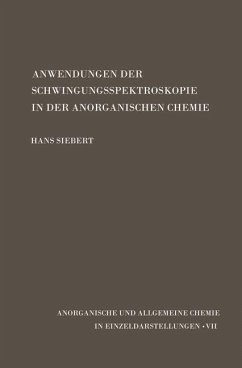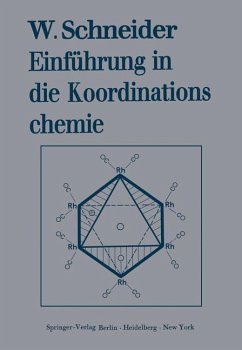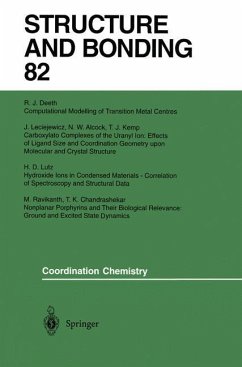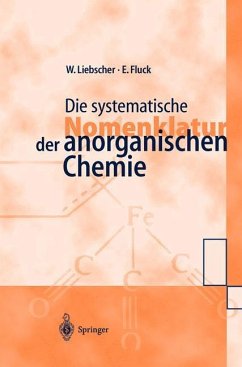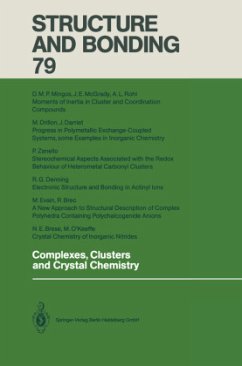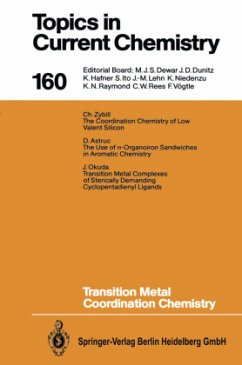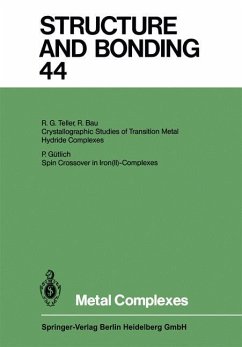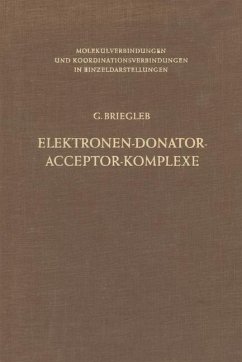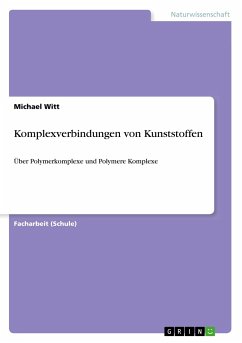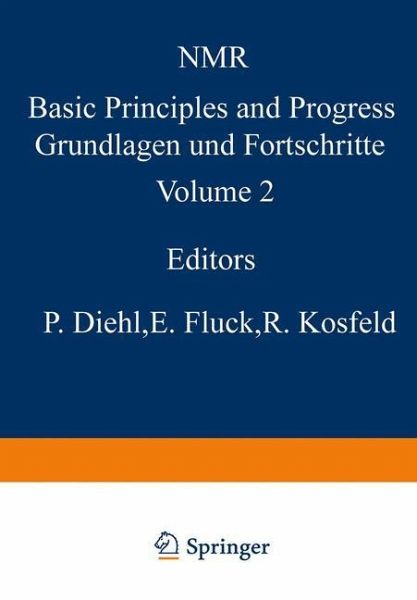
NMR-Untersuchungen an Komplexverbindungen
Versandkostenfrei!
Versandfertig in 1-2 Wochen
79,99 €
inkl. MwSt.

PAYBACK Punkte
0 °P sammeln!
Nuclear magnetic resonance spectroscopy, which has evolved only within the last 20 years, has become one of the very important tools in chemistry and physics. The literature on its theory and application has grown immensely and a comprehensive and adequate treatment of all branches by one author, or even by several, becomes increasingly difficult. This series is planned to present articles written by experts working in various fields of nuclear magnetic resonance spectroscopy, and will contain review articles as well as progress reports and original work. Its main aim, however, is to fill a ga...
Nuclear magnetic resonance spectroscopy, which has evolved only within the last 20 years, has become one of the very important tools in chemistry and physics. The literature on its theory and application has grown immensely and a comprehensive and adequate treatment of all branches by one author, or even by several, becomes increasingly difficult. This series is planned to present articles written by experts working in various fields of nuclear magnetic resonance spectroscopy, and will contain review articles as well as progress reports and original work. Its main aim, however, is to fill a gap, existing in literature, by publishing articles written by specialists, which take the reader from the introductory stage to the latest development in the field. The editors are grateful to the authors for the time and effort spent in writing the articles, and for their invaluable cooperation. The Editors NMR-Untersuchungen an Komplexverbindungen H. J. KELLER Anorganisch-chemisches Laboratorium der Technischen Hochschule Munchen Inhalt 1. Einleitung . . . . . . . . . . . . . . . . . . . . . . . . . . . . . . . . . . . . . . . . . . . . . . . . . . . . . 3 2. Die Theorie der NMR-Parameter. . . . . . . . . . . . . . . . . . . . . . . . . . . . . . . . . 3 2. 1. Verschiebungen. . . . . . . . . . . . . . . . . . . . . . . . . . . . . . . . . . . . . . . . . . . . . 4 2. 2. Die Kopplungskonstanten . . . . . . . . . . . . . . . . . . . . . . . . . . . . . . . . . . . 8 3. NMR an MetaJI-Komplexen im resten Zustand . . . . . . . . . . . . . . . . . . . . . 10 3. 1. Unterscheidung zwischen "magnetischen" und "nichtmagnetischen" Festkorpern. . . . . . . . . . . . . . . . . . . . . . . . . . . . . . . . . . . . . . . . . . . . . . . . 10 3. 1. 1. Nichtmagnetische Festkorper . . . . . . . . . . . . . . . . . . . . . . . . . . . . 10 3. 1. 1. 1. Direkte Dipol-Dipol-Wechselwirkung . . . . . . . . . . . . . . 10 3. 1. 1. 1. 1. Ausmittelnde Bewegungen . . . . . . . . . . . . . . .. 15 3. 1. 1. 2. Verschiebungen . . . . . . . . . . . . . . . . . . . . . . . . . . . . . . . . . 17 3. 1. 2. "Magnetische" Festkorper. . . . . . . . . . . . . . . . . . . . . . . . . . . . . . . 18 3. 1. 2. 1. Schwache intermolekulare Wechselwirkungen zwischen den Elektronen. . . . . . . . . . . . . . . . . . . . . . . . . . . . . . . . . . 18 3. 1. 2. 2. Starke intermolekulare Wechselwirkungen . . . . . . . . . .



